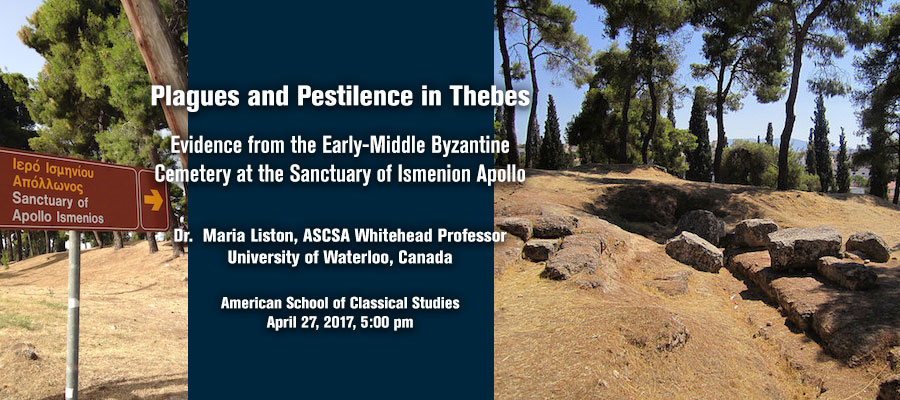Plagues and Pestilence in Thebes: Evidence from the Early-Middle Byzantine Cemetery at the Sanctuary of Ismenion Apollo, lecture by Whitehead Professor, Dr. Maria Liston (University of Waterloo, Canada), American School of Classical Studies, April 27, 2017, 5:00 pm
Excavations in the Sanctuary of Ismenion Apollo in Thebes revealed a later cemetery of Early and Middle Byzantine burials. Analysis of these burials has generated new information about burial practices in the transition from late Antique to Christian Thebes. A pathological survey of the skeletons has found that a remarkably high percentage of individuals suffered from significant, pathologies, including cancers, brucellosis, extensive trauma, and leprosy. The very high percentage of individuals with leprosy suggests there may have been a nearby leprosarium or hospital, and that this cemetery served to bury those who died of particularly debilitating or disfiguring diseases.
Maria Liston, Associate Professor and Chair of the Anthropology department, received her BA in Classics from King College in Bristol, Tennessee and her MA in Classics from Indiana University. She then completed a BA and PhD in Anthropology from the University of Tennessee. She pursues research as a skeletal biologist and archaeologist, focusing on the excavation and analysis of human remains and their mortuary contexts. Since 2001 she has worked as the skeletal biologist in the Athenian Agora, the civic and religious center of ancient Athens. In her work there she has recently identified the oldest case of battered child syndrome known from the archaeological record. She also works in Greece with the excavations at Mycenaean Iklaina, and the new excavations in the Sanctuary of Ismenion Apollo in Thebes. She is currently publishing the skeletons from tombs found at Kavousi, Crete.
